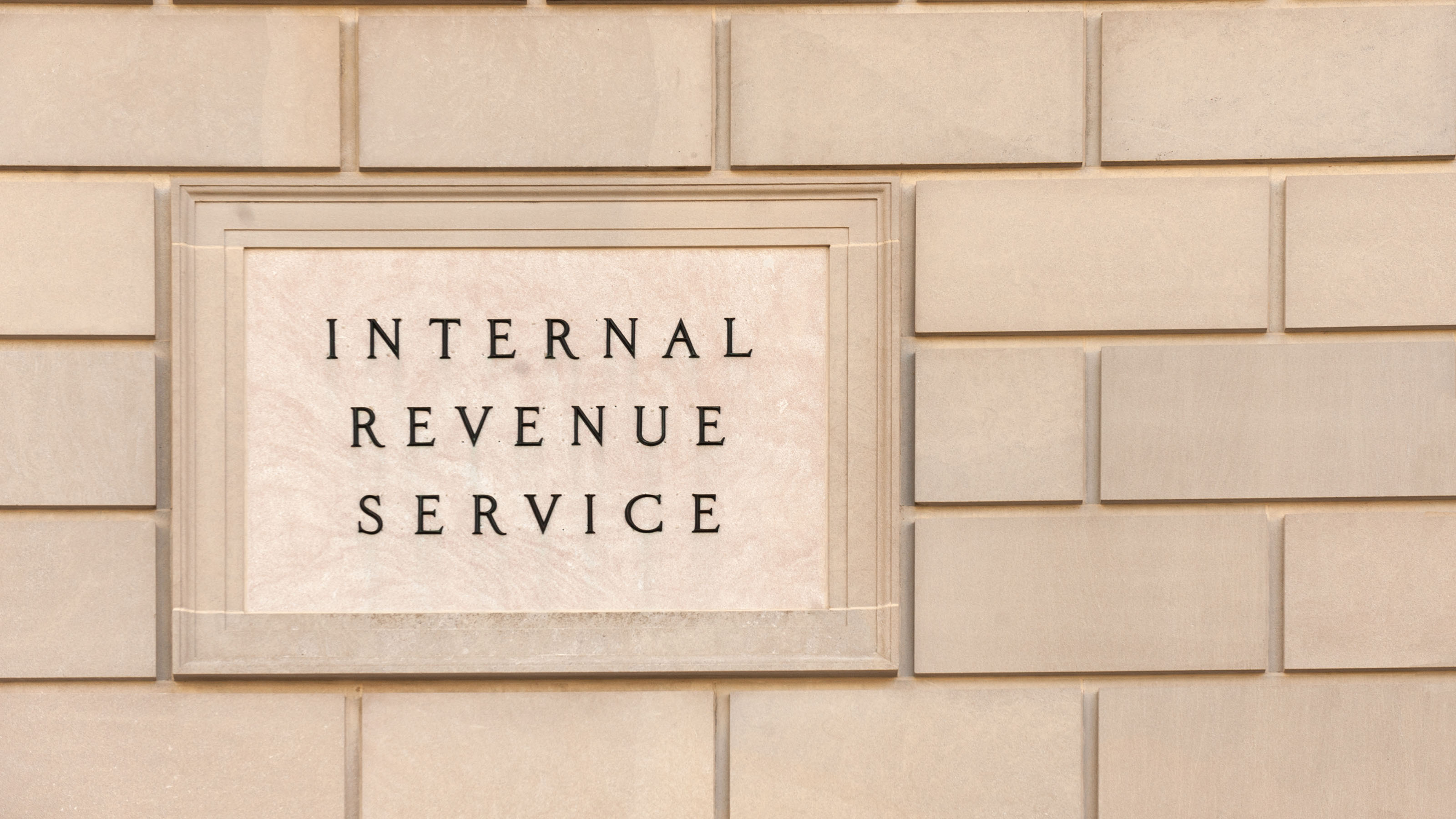SECURE Act: What to Do Now to Help Limit Heirs' Taxes Later
The new retirement law significantly impacts beneficiaries of retirement accounts and trusts. To limit the tax ramifications, consider your options.


The Setting Every Community Up for Retirement Enhancement (SECURE) Act of 2019, which passed in December 2019, has wide-ranging effects on retirement savings. Most of the act’s provisions will have a positive impact on Americans’ ability to save. One aspect, however, eliminates a commonly discussed planning tool: the ability to stretch distributions from retirement plan accounts and Inherited IRAs (commonly referred to as stretch IRAs) over a beneficiary’s lifetime.
Going forward, the accounts of IRA owners and plan participants who died after Dec. 31, 2019, will generally need to be fully distributed to non-spouse individual beneficiaries within 10 calendar years. Beneficiaries excluded from this rule include entities, surviving spouses, disabled or chronically ill individuals, or those less than 10 years younger than the participant/owner. For young children of the original owner, the 10-year period to fully distribute the account starts when they reach the age of majority.
How should investors react to this change?
First, keep it in perspective. Many people will use most or all of their retirement assets to fund their retirement. As for assets you may leave behind, many beneficiaries withdraw the money more quickly than required. (The best laid estate plans may not be fully appreciated by the next generation.) And although it’s disappointing that Congress has changed the rules on us, it’s not shocking.
From just $107.88 $24.99 for Kiplinger Personal Finance
Become a smarter, better informed investor. Subscribe from just $107.88 $24.99, plus get up to 4 Special Issues

Sign up for Kiplinger’s Free Newsletters
Profit and prosper with the best of expert advice on investing, taxes, retirement, personal finance and more - straight to your e-mail.
Profit and prosper with the best of expert advice - straight to your e-mail.
If you’ve carefully planned an estate strategy involving beneficiaries — such as the use of a stretch IRA — for significant retirement accounts, you should meet with your financial planner and/or estate attorney. Those experts can help you clarify your estate goals and develop an action plan.
Planning starts with understanding your goals.
T. Rowe Price advocates the idea of “visualizing retirement.” This includes thinking about the who, what, where, when and why of your later years. Similar questions are relevant for estate planning. “Not only who the money is for, but also what the purpose of the money is, when it will be useful, and why it’s important to you should be considered.” The new legislation, by reducing the value of some tax strategies, may actually prompt more purposeful allocation of resources.
There are still ways to help your beneficiaries limit taxes.
Another helpful practice is having regular financial conversations among the different generations of your family. This legislation is a potential catalyst to schedule this type of meeting. The more open you and your family members are about assets, income and taxes, the more you can help them inherit as much as possible after taxes. For example:
- If your beneficiaries will likely be in a higher tax bracket after your passing than you were, you may want to rely largely on tax-deferred distributions from traditional accounts to fund your own retirement spending. This could leave more tax-efficient assets, such as Roth accounts and stepped-up taxable investments, for your beneficiaries.
- In this situation, Roth conversions may also be a wise strategy. The rationale is to pay taxes on the conversion now at a lower rate than what you expect your beneficiaries will incur.
- Consider leaving different types of accounts to different beneficiaries. For example, you can leave a child with lower income more tax-deferred assets and a child with higher income more Roth or taxable accounts. But remember, if your goal is fairness and family harmony, it’s critical to coordinate your beneficiary designations with carefully written estate documents.
- Another idea is to divide retirement accounts among several beneficiaries. This reduces the risk that income over the 10-year period will push a beneficiary into a higher tax bracket.
Your choice of beneficiaries will depend on your goals and situation. That said, here are some ideas to consider:
- Your personal goals and tax objectives are probably both well served by making your spouse the primary beneficiary. Surviving spouses will continue to have the benefit of taking distributions over their lifetimes.
- Young beneficiaries will no longer have the tax benefit of a long distribution period. However, if this beneficiary election is consistent with your goals, leaving tax-deferred assets to them may still be more tax-efficient than leaving them to family members with higher incomes.
- On the other end of the spectrum, if you have adult children likely to retire within 10 years of your death, they might be good beneficiary choices. The income from your retirement accounts may not hit their taxes during their peak earning years. That money could help them meet goals, such as bridging an insurance gap before Medicare or delaying claiming Social Security benefits.
Another wrinkle is that within the 10-year period, the act does not specify a required minimum distribution (RMD) schedule as was previously required with a stretch IRA and other inherited retirement accounts. This may give beneficiaries (especially ones with variable incomes) the opportunity to take more distributions in lower-income years. However, there is also a risk that your children may forget about this rule and end up facing an unnecessarily large tax bill at the end of the 10-year period. Communicating across generations and introducing your kids to your financial planner could help avoid this situation.
It’s time to re-evaluate estate planning tools – especially utilizing trusts as beneficiaries.
Some investors choose to name trusts as beneficiaries of their retirement accounts. Reasons for this strategy usually include protecting their family and enabling the assets to continue growing tax-deferred. Even before the SECURE Act, this technique required careful legal work to meet those objectives. With the SECURE Act’s passage, there are two big potential pitfalls of these trust arrangements:
- Some income could be unintentionally taxed at very unfavorable trust tax rates.
- Trusts with distribution rules based on RMDs could be forced to distribute all inherited IRA assets in the 10th year. This is likely contrary to your estate goals and could result in a large tax bill for the trust beneficiaries.
If you have trusts named as beneficiaries on retirement accounts — especially tax-deferred accounts — you should review this strategy with your financial planner. While Roth accounts left to a trust don’t face the potential tax consequences above, it’s worth re-evaluating whether the trust still meets your needs.
If you are charitably inclined, consider using your tax-deferred accounts to support worthwhile causes. You can satisfy RMDs for IRAs during your lifetime through qualified charitable contributions, and charitable trusts can be part of your estate plan.
Life insurance is also commonly touted as a tax-efficient way to bequeath wealth. For those in very high tax brackets who expect to incur estate taxes, insurance strategies may be even more attractive in the post-SECURE Act world. Most people, however, should buy life insurance for its intended purpose — to protect family members in the event of an untimely death.
Finally, the SECURE Act is a good reminder to review your estate plans regularly. Many things can change in a 10-year period: goals, assets, family dynamics, income levels, tax situations and more. Take a fresh look at your plan — and remember to keep the financial communication flowing across generations.
Profit and prosper with the best of Kiplinger's advice on investing, taxes, retirement, personal finance and much more. Delivered daily. Enter your email in the box and click Sign Me Up.

Roger Young is Vice President and senior financial planner with T. Rowe Price Associates in Owings Mills, Md. Roger draws upon his previous experience as a financial adviser to share practical insights on retirement and personal finance topics of interest to individuals and advisers. He has master's degrees from Carnegie Mellon University and the University of Maryland, as well as a BBA in accounting from Loyola College (Md.).
-
 5 Types of Gifts the IRS Won’t Tax: Even If They’re Big
5 Types of Gifts the IRS Won’t Tax: Even If They’re BigGift Tax Several categories of gifts don’t count toward annual gift tax limits. Here's what you need to know.
-
 The 'Scrooge' Strategy: How to Turn Your Old Junk Into a Tax Deduction
The 'Scrooge' Strategy: How to Turn Your Old Junk Into a Tax DeductionTax Deductions We break down the IRS rules for non-cash charitable contributions. Plus, here's a handy checklist before you donate to charity this year.
-
 IRS Says You Made a Tax Return Mistake? A New Law Could Help You Fight Back
IRS Says You Made a Tax Return Mistake? A New Law Could Help You Fight BackTax Law Updated taxpayer protections change what the IRS must explain on error notices and how long you have to respond.
-
 I'm a Tax Attorney: These Are the Year-End Tax Moves You Can't Afford to Miss
I'm a Tax Attorney: These Are the Year-End Tax Moves You Can't Afford to MissDon't miss out on this prime time to maximize contributions to your retirement accounts, do Roth conversions and capture investment gains.
-
 I'm an Investment Adviser: This Is the Tax Diversification Strategy You Need for Your Retirement Income
I'm an Investment Adviser: This Is the Tax Diversification Strategy You Need for Your Retirement IncomeSpreading savings across three "tax buckets" — pretax, Roth and taxable — can help give retirees the flexibility to control when and how much taxes they pay.
-
 Could an Annuity Be Your Retirement Safety Net? 4 Key Considerations
Could an Annuity Be Your Retirement Safety Net? 4 Key ConsiderationsMore people are considering annuities to achieve tax-deferred growth and guaranteed income, but deciding if they are right for you depends on these key factors.
-
 I'm a Financial Pro: Older Taxpayers Really Won't Want to Miss Out on This Hefty (Temporary) Tax Break
I'm a Financial Pro: Older Taxpayers Really Won't Want to Miss Out on This Hefty (Temporary) Tax BreakIf you're age 65 or older, you can claim a "bonus" tax deduction of up to $6,000 through 2028 that can be stacked on top of other deductions.
-
 Meet the World's Unluckiest — Not to Mention Entitled — Porch Pirate
Meet the World's Unluckiest — Not to Mention Entitled — Porch PirateThis teen swiped a booby-trapped package that showered him with glitter, and then he hurt his wrist while fleeing. This is why no lawyer will represent him.
-
 Smart Business: How Community Engagement Can Help Fuel Growth
Smart Business: How Community Engagement Can Help Fuel GrowthAs a financial professional, you can strengthen your brand while making a difference in your community. See how these pros turned community spirit into growth.
-
 In 2026, the Human Touch Will Be the Differentiator for Financial Advisers
In 2026, the Human Touch Will Be the Differentiator for Financial AdvisersAdvisers who leverage innovative technology to streamline tasks and combat a talent shortage can then prioritize the irreplaceable human touch and empathy.
-
 How Financial Advisers Can Deliver a True Family Office Experience
How Financial Advisers Can Deliver a True Family Office ExperienceThe family office model is no longer just for the ultra-wealthy. Advisory firms will need to ensure they have the talent and the tech to serve their clients.